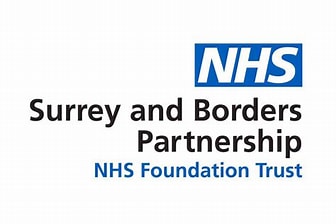
Through demand and capacity modelling we enabled the transformation lead and director of The Children and Young People's Community Teams to make a case for increasing the budgets for their teams in response to increasing service demand.
Challenge
Surrey and Borders Mental Health NHS Partnership Trust (SaBP) were in a financial deficit as a result of increasing demand for children and young people’s mental health services throughout the COVID-19 pandemic and the following years. SaBP approached us for support with demand and capacity modelling for two of the services provided within Surrey:
- The Access and Advice Team - helps young people and their families to identify the best type of support for them, and provides triage. Demand for this service had exceeded expectations and the service is currently provided by a high proportion of agency staff.
- The Children and Young People's Community Teams (CYPS CT) - provides specialist assessment and treatment for those up to the age of 18 who are presenting with a mental health disorder. This service also has an excess agency spend and it is not clear if current data gives an accurate picture of caseloads.
What we did
Utilising a blended team with subject matter expertise in workforce optimisation, analytics and children and young people’s mental health services, we delivered a range of products and services aimed at helping SaBP understand the demand for their services, and the workforce required to meet that demand.
To do this we:
- Carried out a scoping review of single points of access (SPA) for children and young people’s mental health services. This helped to build an understanding of the availability of evidence in relation to SPA and any learning from other areas.
- Process mapping of service pathways, including a revised pathway for Access and Advice based on findings from a workshop which reviewed the service.
- Conducted an analysis of referral and contact data, and developed a demand and capacity modelling tool that could be used to test and compare scenarios.
- A workforce optimisation review utilising information gathered through qualitative interviews, submitted evidence and the demand and capacity modelling tool.
- A series of role profiles and skills maps to illustrate how teams could be designed to meet the function of the service whilst still reducing the budget.
Activity
Mental health
Delivered a scoping review, process mapping and data analysis.
Business Intelligence - Consultancy, strategy and transformation
Ensuring there is effective evidence for change and supporting you to deliver real benefits from analytics.
Workforce optimisation
A workforce optimisation review utilising data from qualitative and desk research and demand and capacity modelling.
Outcome
Our findings and recommendations were presented at the SaBPs financial recovery group, and reports were shared with the executive leadership team.
This enabled the transformation lead and director of CYPS CT to make a case for increasing the budgets for both teams to meet the increased service demand.
It has also provided a space where considerations can be made regarding the implementation of recommended team designs.







